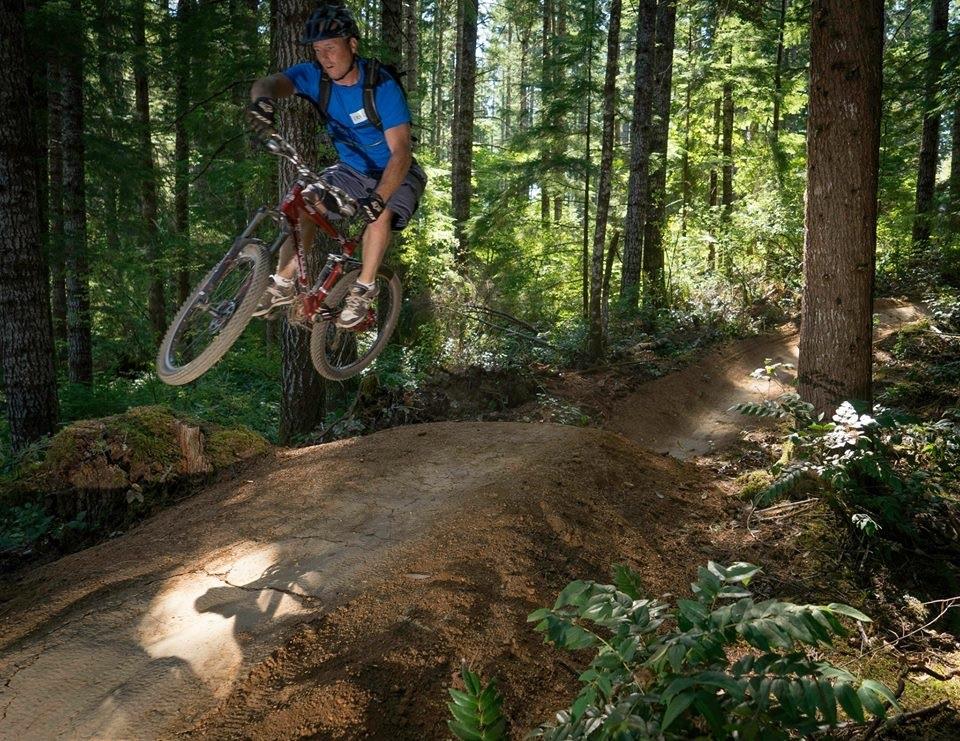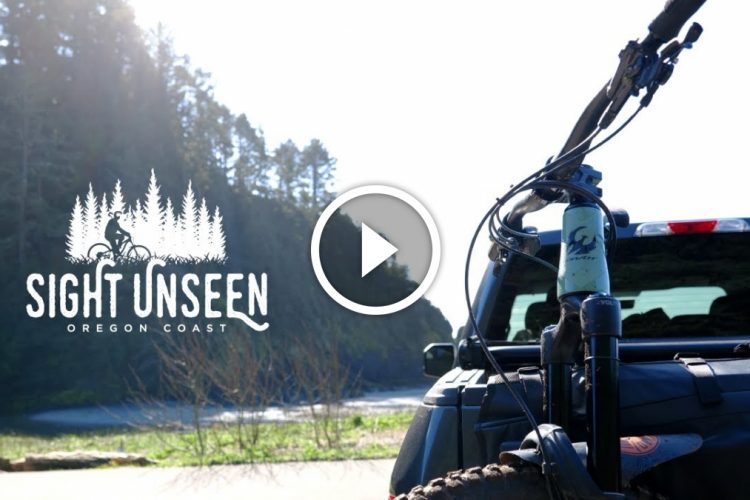Even if they live outside the Northwest, most riders have heard of the McKenzie River Trail and Oakridge’s Alpine Trail because those trails are frequently ranked in top 10 lists. They’ve become destinations for mountain bikers, and if you’re road tripping to the area, be sure to add Alsea Falls to your must-do list.
Call this trio of trails whatever you like, the Triple Crown, or a trifecta, but I prefer the Emerald Triangle because they make an incredible riding experience in one the greenest, most scenic corners of the U.S.

Alsea Falls is actually a trail system, but for practical purposes for mountain bikers, it’s one trail. And ironically, you won’t see a waterfall. The stats are hardly eye-popping, so let’s get that out of the way. It’s about a 10-mile, 1,500 vertical-foot loop, but about five miles are an ascent on paved, gravel, and dirt logging roads, which are closed to vehicles unless there’s logging or special events. The entire network is listed as 12.5 miles, so to be clear, there’s 2.5 miles in the system I haven’t ridden.
So I’m really writing about 5 miles of singletrack trail, which begs the question: “How would a 5-mile trail compare with McKenzie River Trail at 26 miles, or Alpine Trail at 15 miles?”
Here’s your answer. If you cherry picked and condensed the best sections of McKenzie and Alpine into 5 miles, it would look an awful lot like Alsea Falls Trail. It’s a thrill ride of swooping, switchbacking, bermed, undulating, tacky Western Oregon loam through a dense, mossy, evergreen forest where you half expect gnomes to pop out at any moment. Oh, and by the way, they will. Honest.

I’ve ridden all three trails, and when I road trip to Oregon, Alsea Falls is my first stop. It’s not that Alpine and McKenzie River aren’t great trails, because we know they are. But I don’t have to deal with shuttles at Alsea Falls – not that shuttles are a bad thing – I just prefer to avoid them if it’s an option.
I also like the steep-but-casual climb up a road to access singletrack. It’s one of my favorite ways to ride. Riding up a road (one without vehicle traffic, no less) allows me to settle back, spin, and enjoy the scenery.
I also like directional trails, and these are recommended to be ridden downhill. Be forewarned, you may see hikers walking up Alsea Falls trails, typically toward the bottom near the lower trailhead. But it’s nothing like the legions of hikers you can encounter on the McKenzie River Trail.

Finally, I love flow trails, and this trail wasn’t so much built as it was sculpted, and two things the sculptors clearly disliked were straight lines and flat ground. You’re constantly carving, jumping, dropping, or bouncing over rocks or roots into the next beautifully-bermed corner as you wind down the trail.
The designers also had skill levels and fitness levels in mind. The top of the trail (Highballer) is the most technical, but it is rated as an intermediate trail. It connects with Springboard, which is easier, but no less fun. The concept is less-skilled and less-fit riders will stick to the lower end, and fitter, more-advanced riders will venture to the top. Either way, be prepared for a giggle fest, and keep an eye out for those gnomes. They’re out there. Trust me.

Getting there: The trails are located about equal distance from the college towns of Eugene and Corvallis and near the small town of Monroe. You can find a map here.






















3 Comments
Aug 9, 2017
Aug 9, 2017
Alsea is a completely different beast than McKenzie and Alsea. McKenzie is the most over-rated mt. biking destination in the state or nation. Lots of sharp lava rock, and hikers. Much better options nearby. Try this: https://dirtmagnet.wordpress.com/trails-of-oregon-2/cascades/pyramids-epic-loop/
Alpine is cross country, you are encountering a trail left by fire watchmen from a century ago. The features are erosion, roots, and rocks. Alsea is sculpted and architected. Dead Mountain in Oakridge however is comparable to Alsea.
Aug 8, 2017
www.teamdirt.org